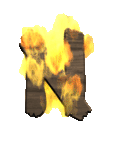<Bob> Hi Leslie how are you to today?
<Leslie> I am good thanks Bob and looking forward to today’s session. What is the topic?
<Bob> We will use your Niggle-o-Gram® to choose something. What is top of the list?
<Leslie> Let me see. We have done “Engagement” and “Productivity” so it looks like “Near-Misses” is next.
<Bob> OK. That is an excellent topic. What is the specific Niggle?
<Leslie> “We feel scared when we have a safety near-miss because we know that there is a catastrophe waiting to happen.”
<Bob> OK so the Purpose is to have a system that we can trust not to generate avoidable harm. Is that OK?
<Leslie> Yes – well put. When I ask myself the purpose question I got a “do” answer rather than a “have” one. The word trust is key too.
<Bob> OK – what is the current safety design used in your organisation?
<Leslie> We have a computer system for reporting near misses – but it does not deliver the purpose above. If the issue is ranked as low harm it is just counted, if medium harm then it may be mentioned in a report, and if serious harm then all hell breaks loose and there is a root cause investigation conducted by a committee that usually results in a new “you must do this extra check” policy.
<Bob> Ah! The Burn-and-Scrape model.
<Leslie>Pardon? What was that? Our Governance Department call it the Swiss Cheese model.
<Bob> Burn-and-Scrape is where we wait for something to go wrong – we burn the toast – and then we attempt to fix it – we scrape the burnt toast to make it look better. It still tastes burnt though and badly burnt toast is not salvageable.
<Leslie>Yes! That is exactly what happens all the time – most issues never get reported – we just “scrape the burnt toast” at all levels.


 <Bob> One flaw with the Burn-and-Scrape design is that harm has to happen for the design to work.
<Bob> One flaw with the Burn-and-Scrape design is that harm has to happen for the design to work.
It is all reactive.
Another design flaw is that it focuses attention on the serious harm first – avoidable mortality for example. Counting the extra body bags completely misses the purpose. Avoidable death means avoidably shortened lifetime. Avoidable non-fatal will also shorten lifetime – and it is even harder to measure. Just consider the cumulative effect of all that non-fatal life-shortening avoidable-but-ignored harm?
Most of the reasons that we live longer today is because we have removed a lot of lifetime shortening hazards – like infectious disease and severe malnutrition.
Take health care as an example – accurately measuring avoidable mortality in an inherently high-risk system is rather difficult. And to conclude “no action needed” from “no statistically significant difference in mortality between us and the global average” is invalid and it leads to a complacent delusion that what we have is good enough. When it comes to harm it is never “good enough”.
<Leslie> But we do not have the resources to investigate the thousands of cases of minor harm – we have to concentrate on the biggies.
<Bob> And do the near misses keep happening?
<Leslie> Yes – that is why they are top rank on the Niggle-o-Gram®.
<Bob> So the Burn-and-Scrape design is not fit-for-purpose.
<Leslie> So it seems. But what is the alternative? If there was one we would be using it – surely?
<Bob> Look back Leslie. How many of the Improvement Science methods that you have already learned are business-as-usual?
<Leslie> Good point. Almost none.
<Bob> And do they work?
<Leslie> You betcha!
<Bob> This is another example. It is possible to design systems to be safe – so the frequent near misses become rare events.
<Leslie> Is it? Wow! That know-how would be really useful to have. Can you teach me?
<Bob> Yes. First we need to explore what the benefits would be.
<Leslie> OK – well first there would be no avoidable serious harm and we could trust in the safety of our system – which is the purpose.
<Bob> Yes …. and?
<Leslie> And … all the effort, time and cost spent “scraping the burnt toast” would be released.
<Bob> Yes …. and?
<Leslie> The safer-by-design processes would be quicker and smoother, a more enjoyable experience for both customers and suppliers, and probably less expensive as well!
<Bob> Yes. So what does that all add up to?
<Leslie> A win-win-win-win outcome!
<Bob> Indeed. So a one-off investment of effort, time and money in learning Safety-by-Design methods would appear to be a wise business decision.
<Leslie> Yes indeed! When do we start?
<Bob> We have already started.
For a real-world example of this approach delivering a significant and sustained improvement in safety click here.

